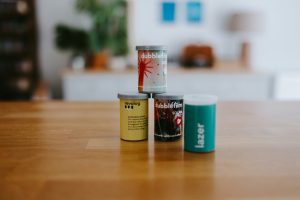Couture craftsmanship merged with sustainable materials
Couture fashion has always been synonymous with luxury, opulence, and extravagance. Yet, in recent years, a new trend has emerged – one that blends the art of haute couture with the principles of sustainability. This fusion of traditional craftsmanship with eco-friendly materials is not just a passing fad, but a conscious effort by fashion designers to make a positive impact on the environment. In this article, we will dive into the world of couture craftsmanship merged with sustainable materials and explore why this movement has captured the attention of both fashion enthusiasts and environmentalists alike.
The Rise of Sustainable Couture
The fashion industry, particularly the haute couture segment, has long been criticized for its detrimental impact on the environment. From harsh chemical dyes to excessive fabric waste, the production of couture garments has been far from sustainable. However, with the rise of sustainability as a global movement, fashion designers have started to take notice and implement eco-friendly practices in their couture collections.
The root of this shift can be traced back to the growing consumer demand for transparency and responsible production methods. Today’s fashion consumers are more informed than ever, and they are actively seeking out brands that align with their values. This has pushed couture designers to explore new ways to create their masterpieces, shifting their focus towards sustainability.
Couture Craftsmanship: A Legacy of Excellence
Couture fashion is often associated with the epitome of luxury and artistry. And this is not without reason – the meticulous craftsmanship that goes into creating a couture garment is unparalleled. Each stitch, fold, and detail is a testament to the skill and dedication of the artisans who bring a designer’s vision to life.
However, this level of craftsmanship comes at a cost. With the focus on intricate designs and intricate techniques, traditional couture production methods often result in a high amount of waste. From leftover fabric scraps to discarded samples, the waste generated during the production process can have a severe impact on the environment. But, with the integration of sustainable materials, designers are finding ways to mitigate their environmental footprint without compromising the quality of their craft.
The Marriage of Couture Craftsmanship and Sustainable Materials
The use of sustainable materials in haute couture collections is not a new concept. However, it has gained more prominence in recent years as designers look for innovative ways to make their creations eco-friendly. From organic cotton and linen to recycled fabrics and even repurposed materials, the possibilities are endless when it comes to sustainable couture materials.
Organic Cotton and Linen
Cotton and linen are two of the most commonly used fabrics in couture fashion. However, the excessive use of chemicals in the production of these fabrics has a detrimental impact on the environment. To combat this, designers are now turning towards organic cotton and linen, which are grown without the use of synthetic pesticides or fertilizers. These fabrics are not only better for the environment, but they also offer better quality and durability compared to their non-organic counterparts.
Recycled Fabrics
The use of recycled fabrics is another popular trend among couture designers. From upcycling vintage fabrics to incorporating recycled plastic bottles and discarded textiles in their collections, designers are finding creative ways to reduce their carbon footprint. This not only reduces the waste generated in the fashion industry but also gives a new life to materials that would otherwise end up in landfills.
Repurposed Materials
Couture designers are also pushing the boundaries of sustainability by repurposing materials in their collections. From reusing old garments and fabrics to incorporating unconventional materials such as plastic bags and newspaper, the possibilities are endless. This not only reduces waste but also adds a unique touch to couture pieces, making them even more exclusive and desirable.
The Future of Sustainable Couture
The integration of sustainable materials in couture collections is just the beginning of a larger movement towards a more sustainable fashion industry. And while it may be a slow process, it is a step in the right direction. The use of eco-friendly materials not only reduces the environmental impact of haute couture but also sets a positive example for the rest of the fashion industry.
Moreover, the popularity of sustainable couture among consumers is a positive sign for the future. As demand for environmentally friendly fashion continues to rise, it will inspire more designers to adopt sustainable practices, leading to a more responsible and eco-conscious industry.
The Bottom Line
Couture craftsmanship merged with sustainable materials may seem like a paradox, but it is, in fact, a beautiful and harmonious union. By bringing together the best of both worlds, designers are making a bold statement – one that reflects their dedication to preserving our planet. And as technology advances and new materials and techniques emerge, the possibilities for sustainable couture are endless. As consumers, we can also play our part by supporting brands that prioritize sustainability and demanding transparency from the ones that do not. After all, a sustainable future begins with the choices we make today.










